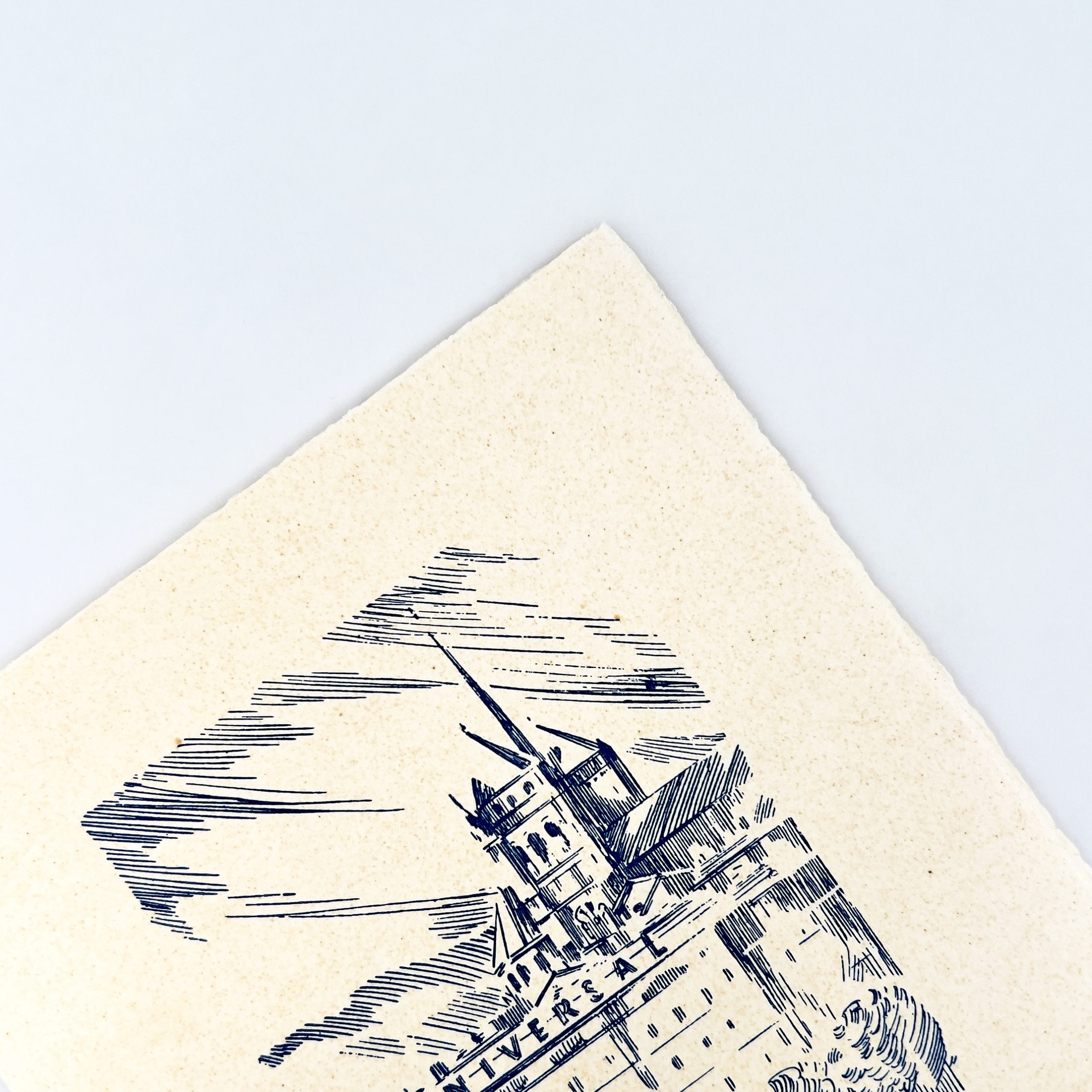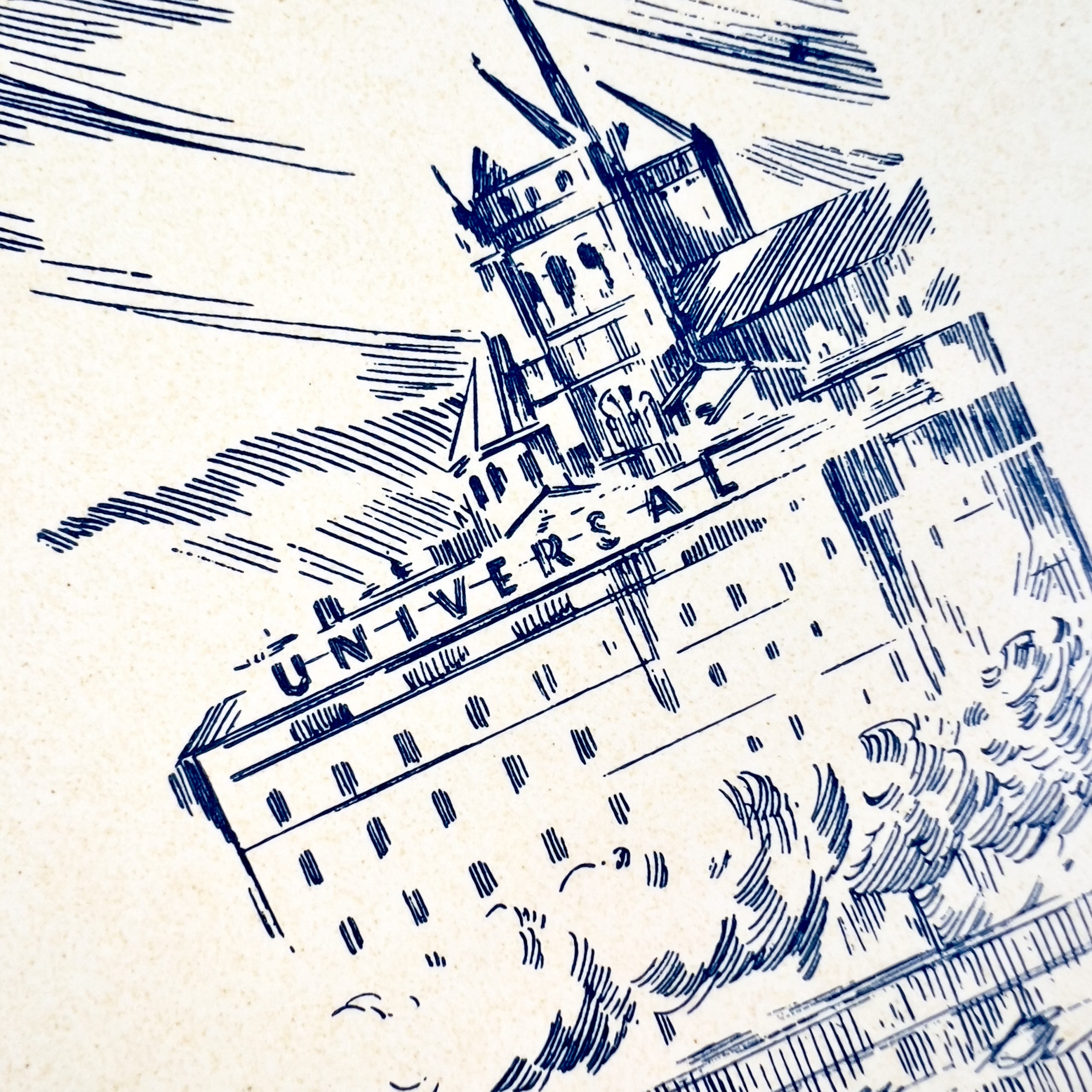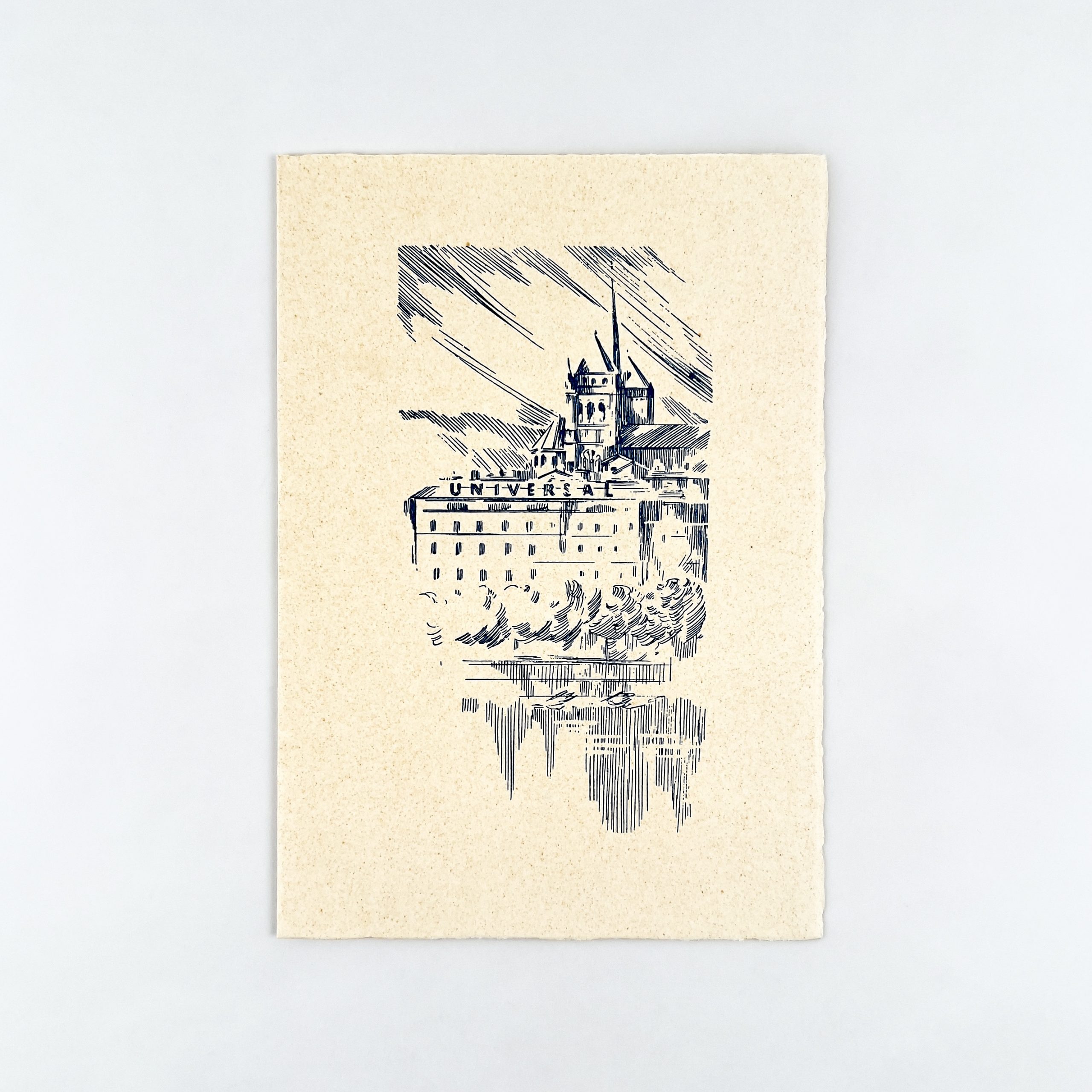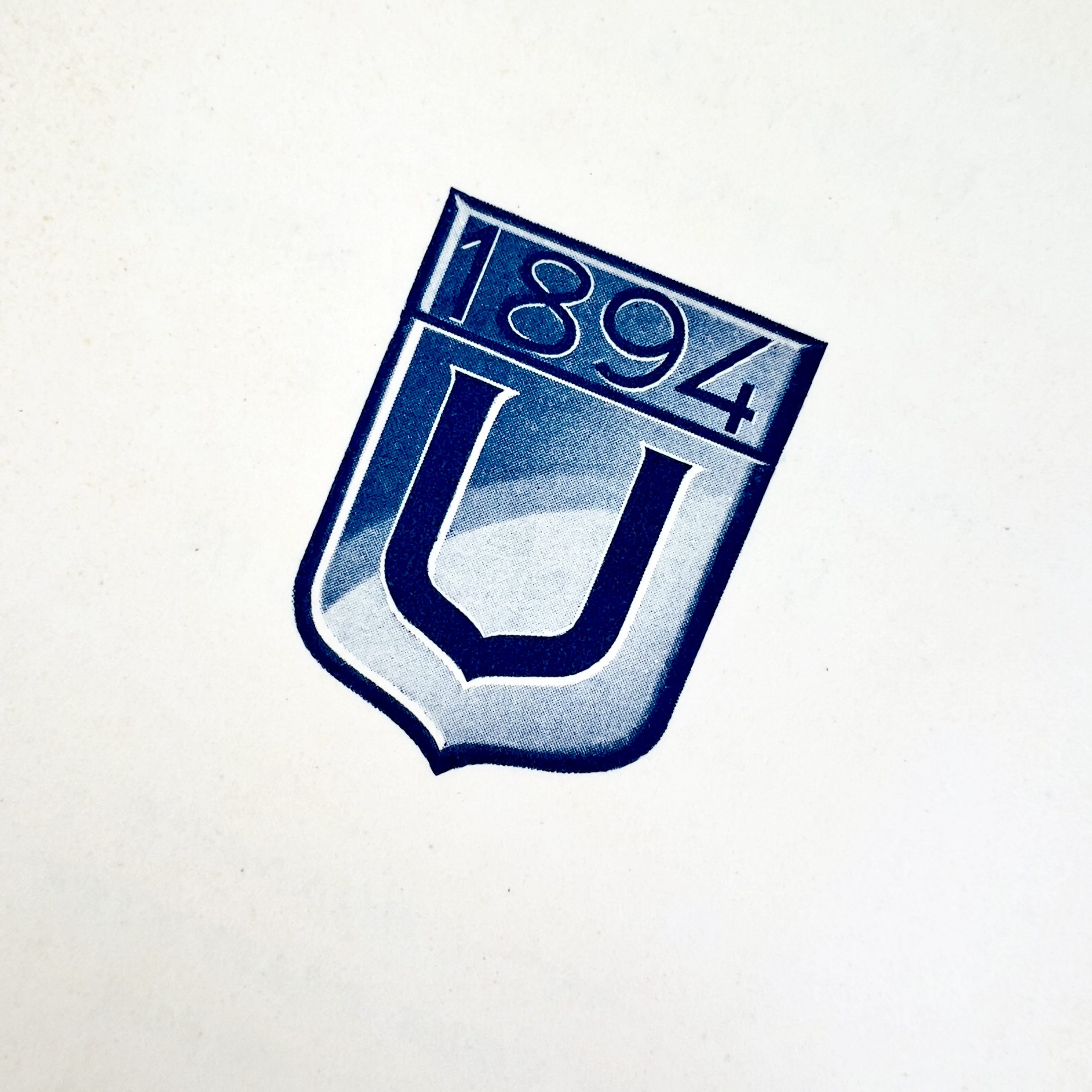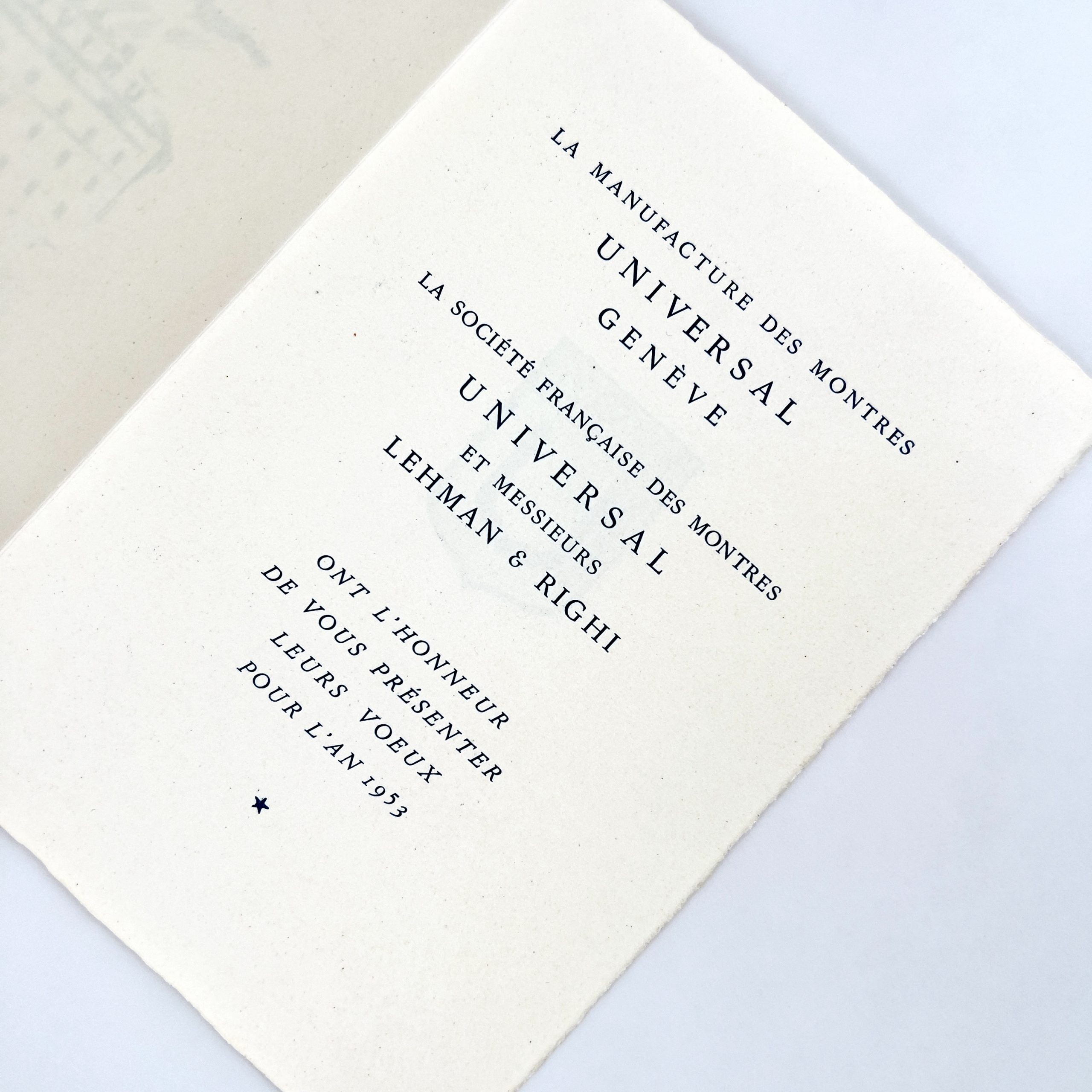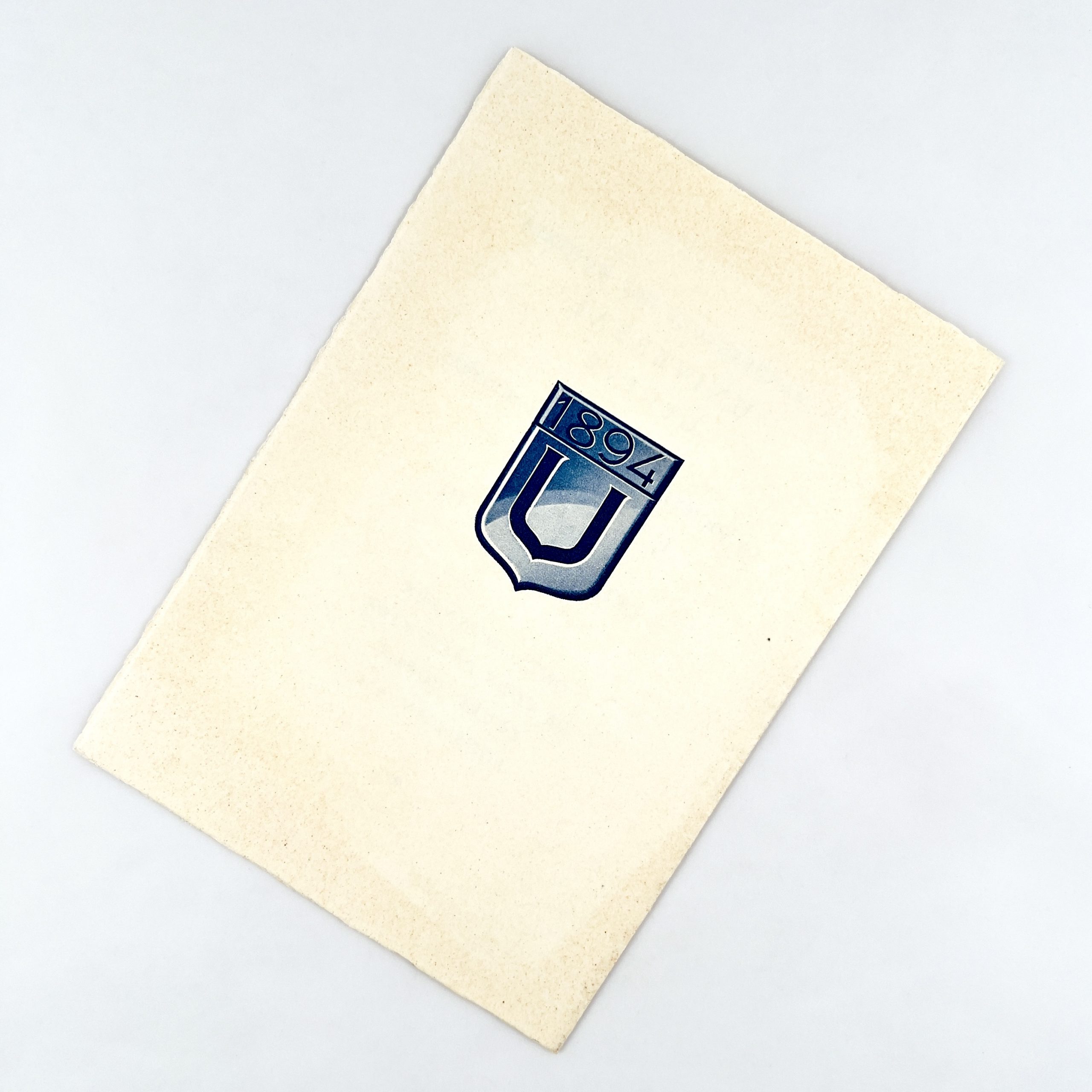-
RARE GREETING CARD
UNIVERSAL GENÈVE SA
1953
-
-
Very rare.
It is a greeting card presenting the wishes for the year 1953 by the manufacture of watches Universal Genève represented by Mr. Lehman and Righi.
A little history: Founded and briefly based in Le Locle, co-founder Ulysse Perret moved Universal to Genève in 1919, cementing the company's status as a Genève-based brand. During the company's tenure in the much smaller town of Le Locle (Neuchâtel region), Perret had registered the company as Universal Watch in 1894 with his classmate Numa-Emile Descombes, both of whom were watchmaking students at the time. Although Universal began solely as a manufacturer and retailer of cases, crowns, dials and movements, the company, under Perret and Descombes, patented the brand's first 24-hour watch.
After Descombes died in 1897 at the age of 34, Perret recruited Louis Edouard Berthoud as a co-manufacturer of complications and the two operated briefly under the registered name Perret & Berthoud before moving to Universal Watch and Company (UWECO) Genève, Ltd. Under both brands, the watchmakers created various pocket and trench watches for both sides during World War I. In 1925, the duo created the brand's first patented self-winding watch called Auto Rem, an octagonal-shaped men's wristwatch with diamond-style hands and a 15-jewel movement.
-
In the 1930s and 1950s, after the pocket watch began to lose its usefulness in favor of the more practical wristwatch during World War I, Universal seized the opportunity by creating the Compur in 1933 and the Aero Compax ("Aviator's Compact Chronograph") in 1936 shortly before the outbreak of World War II. In addition to its "smooth scanning" automatic timing, the Compax was also equipped with a built-in stopwatch that made it a suitable device for soldiers during training exercises and full-fledged combat operations. The Compax has been produced in many variants, including Moon Phase, Medico, Tri-, Uni-, and Master Vortex.
During the same period, Universal briefly collaborated with the Parisian haute couture brand Hermès and designed the For Hermès chronographs, which featured square-knob registers, rangefinders and tachymeters, a movement containing a Breguet spiral, and a dial with Arabic numerals. Hermès' Paris headquarters acted as a major distributor for all Universal-branded watches in Europe until the 1950s, while the Henri Stern Watch Agency in Manhattan, Patek Philippe's U.S. retailer, was an official Universal GENÈVE reseller in North America.
Universal's popularity with chronographs attracted the attention of high government officials throughout Europe, including the Dutch royal family, who granted the Swiss brand a royal warrant in 1939 to issue a military watch for the national army, with Queen Wilhelmina's initials embossed on the dial. The Dutch army used this watch until Nazi Germany bombed Rotterdam in May of that year and occupied the Netherlands until 1945.
For civilian women of this era, Universal distributed the art deco "Couture Diamond" watch, which featured a diamond-edged mother-of-pearl dial made of gold, stainless steel, or platinum. The women's cuff watch, which earned Universal Genève the title of "watchmaker couturier", was sold in affluent boutiques around the world and was the most popular among actresses, socialites and the wives of world leaders.
-
In the 1950s-1960s, the most famous post-war model was probably the Polerouter. Designed by Gérald Genta, it was initially produced under the name Polarouter in 1954, appearing with a Cal 138SS Bumper movement. The following year it was replaced by the innovative Cal 215 microtor movement which, with minor modifications and a name change (from Polarouter to Polerouter, in 1955), was produced until the end of 1969. The Polerouter's durability under extreme temperatures and fluctuating altitudes made it a favorite timepiece among Scandinavian Airlines pilots who flew over the Arctic. The worldwide fame of the Polerouter Date was comparable to the reputation of similar Genève automatics like the Rolex Oyster Date and the Omega Seamaster Date.
Universal Genève subsequently designed the Golden Shadow and White Shadow, first produced in 1965, which were the thinnest automatic watch movements at the time, at only 2.3 mm thick. This record was held until 1978. The Shadows were also designed by Genta and were available in 18K yellow and white gold as the Golden Shadow and in stainless steel as the White Shadow. Both watches contained the Calibre 2-66 micro-rotor movement until the late 1960s.
-
During the 1970s, Universal was one of the few Swiss watch brands to introduce a quartz movement and phase out automatics, coinciding with an era now known as the "quartz crisis. While the company continued to use silver, gold, platinum, and diamonds for its dials, cases, bracelets, and straps, the move to quartz oscillators was a cost-effective alternative to automatic complications, which were considerably more expensive and time-consuming to produce, and could not compete with the massive growth of electronic movements. In particular, the Golden and White Shadows, which previously contained microtors, will be replaced by Unisonics and Accutrons.
Since the innovation of quartz technology originated in Japan, Universal began to focus most of its attention on the Asian watch market, as a significant portion of the company's revenue was already centered in Hong Kong. Although Forbes still ranks Universal in value ahead of Corum, IWC and Rolex, and as being more expensive than Omega, Longines and Baume et Mercier, the international marketing strategies and the quartz adventure proved economically devastating to the brand, causing capital losses among its holding companies and at the same time the popularity of the brand itself.
-
After a difficult period in the 1980s and 1990s, Universal Genève launched a series of watches with a new micro-rotor caliber that revisited the company's earlier success. Although still based in Genève, Universal Genève was purchased in 1989 by Hong Kong-based investment company Stelux Holdings International, Ltd. which also owns Cyma, another high-end Swiss watchmaker whose patents had been owned by Universal since 1918. In the late 1960s and early 1970s, Universal was owned by New York-based Bulova, an acquisition that expanded the company's reputation in the Japanese and North American markets and led to design collaborations with other watch and jewelry companies such as Tiffany's, Cartier SA and Movado.
Since 2011, Universal has been an active member of the Federation of the Swiss Watch Industry, has three offices in Switzerland and oversees the watchmaker Cyma based in La Chaux-de-Fonds.
This is a copy that is in absolutely incredible condition, never corroded or stained.
The paper has a slightly eggshell color and all prints are a dark blue color.
The first page of the map shows a sketch of the Universal Genève company building in Le Locle, Switzerland.
On the back of this card is the universal Genève logo of the time as well as the date 1894 which is the year of creation of the company in Le Locle.
This is a very rare, if not unique, piece of Universal genève history.
-

